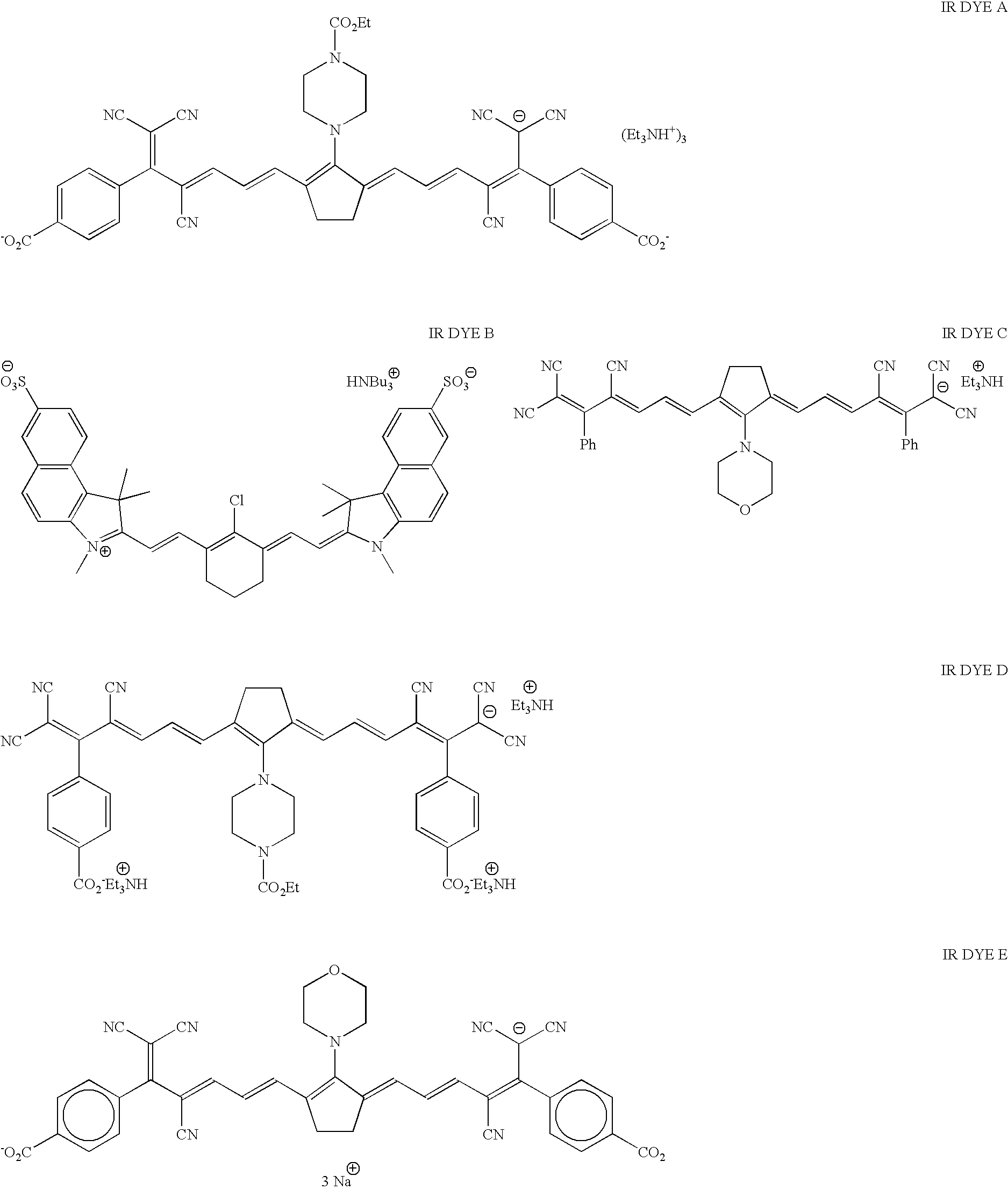Nanopastes for use as patterning compositions
a technology of nanopastes and compositions, applied in the field of nanopastes for use as patterning compositions, can solve the problems of affecting the development ability of common developers, affecting the development efficiency of common developers, and affecting the development efficiency of common developers, and achieves the effect of stable dispersion and surprising low viscosity of dispersion
- Summary
- Abstract
- Description
- Claims
- Application Information
AI Technical Summary
Benefits of technology
Problems solved by technology
Method used
Image
Examples
examples 1 – 3
EXAMPLES 1–3
Formation of Lithographic Printing Plates for On-Press Development
[0084]A brush-grained and phosphoric acid anodized aluminum sheet was coated using a wire wound bar with a layer of a thermally sensitive composition to a dry film weight of 1 g / m2. This composition of the thermally sensitive layer is described in TABLE I below. The resulting film was then dried at 90° C. for about 30 seconds in a Ranar conveyor oven.
[0085]
TABLE I(Formulations in % solids)ComponentsExample 1Example 2Example 3Ag solution3.353.162.97IR dye A0.370.370.37Klucel E0.19MMA solution0.37Water96.2892.7595.17
[0086]Ag sol was an inorganic nanopaste having a metallic particle mean diameter of 11.0 nm in a 5 w / w % solution in water, which is available from ANP (South Korea).
[0087]IR dye A is described above in the previous text.
[0088]Klucel E is a hydroxypropyl cellulose that was obtained from Hercules Inc. (Wilmington, Del.).
[0089]MMA solution was a poly(methyl methacrylate) dispersed in water.
[0090]Th...
PUM
| Property | Measurement | Unit |
|---|---|---|
| thickness | aaaaa | aaaaa |
| diameter | aaaaa | aaaaa |
| diameter | aaaaa | aaaaa |
Abstract
Description
Claims
Application Information
 Login to View More
Login to View More - R&D
- Intellectual Property
- Life Sciences
- Materials
- Tech Scout
- Unparalleled Data Quality
- Higher Quality Content
- 60% Fewer Hallucinations
Browse by: Latest US Patents, China's latest patents, Technical Efficacy Thesaurus, Application Domain, Technology Topic, Popular Technical Reports.
© 2025 PatSnap. All rights reserved.Legal|Privacy policy|Modern Slavery Act Transparency Statement|Sitemap|About US| Contact US: help@patsnap.com

